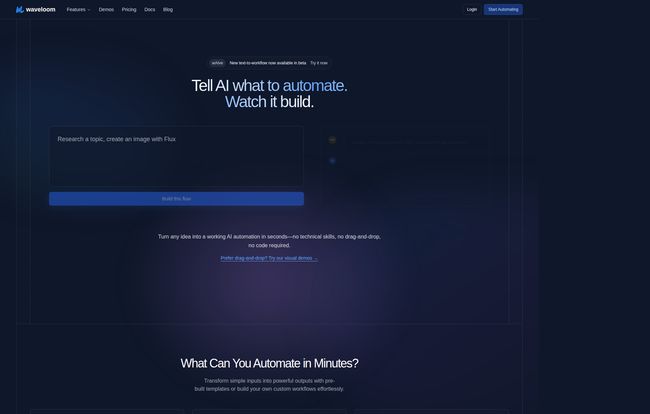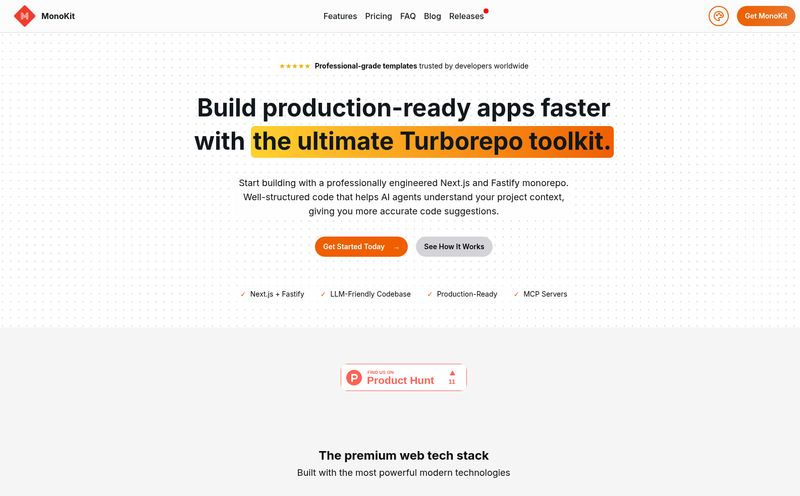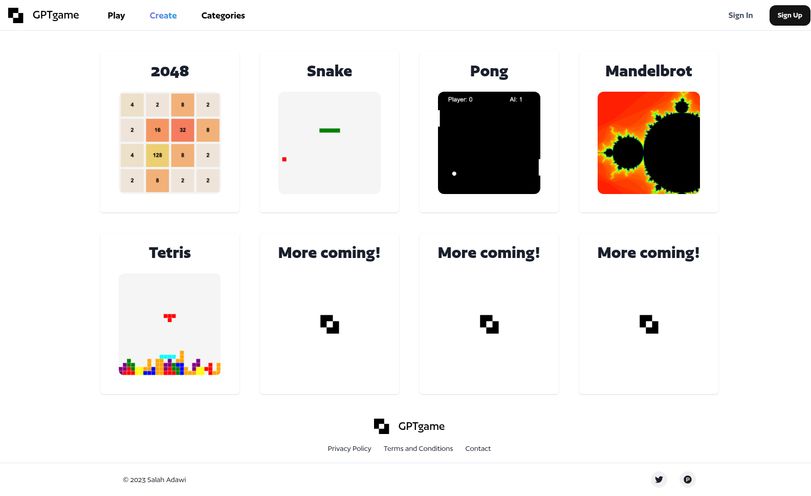The last couple of years in the AI space have been a whirlwind. One minute you’re mastering one tool, the next there are three new ones that supposedly make the old one obsolete. My browser bookmarks folder is a graveyard of “game-changing” AI apps. We’re all juggling logins, API keys, and trying to get different platforms to talk to each other. It can feel less like the future of work and more like being a frantic switchboard operator from the 1950s.
It’s a mess. A glorious, innovative, and exciting mess... but a mess nonetheless.
So, when a tool like Waveloom pops up on my radar, claiming to bring order to that chaos, my interest is piqued. It promises a visual, no-code way to build AI-powered workflows. Basically, it wants to be the calm, cool, and collected conductor for your wild AI orchestra. But we've heard these promises before, right? I decided to take a proper look, get my hands a little dirty, and see if it’s just another flashy tool or something with real staying power.
So, What Exactly is Waveloom?
Think of it like this: you have a box of incredibly powerful LEGO bricks. One brick is GPT-4, another is Claude 3, you've got a DALL-E brick for images, and a Whisper brick for audio transcription. By themselves, they're amazing. But what if you could snap them together to build something bigger, something automated, without needing an engineering degree?
That’s the core idea behind Waveloom. It’s a visual, drag-and-drop platform where those AI models are the blocks. You can draw lines between them on a canvas to create a 'flow'. For example, you could design a flow that automatically takes an audio file, sends it to Whisper to get a transcript, passes that transcript to Claude to write a blog post, and then shoots that text over to GPT to generate five catchy social media captions. All in one seamless, automated process.

Visit Waveloom
This whole concept is often called 'AI orchestration,' and it's the next big step beyond just using a single chatbot. Waveloom aims to make this high-level automation accessible to people who don't write code for a living. And honestly, that’s a huge chunk of the people who could benefit most from this tech.
Who is This Tool Really For?
While the website says it’s for “creators, marketers, and small teams,” I think we can get more specific. Based on my experience, a tool like this hits the sweet spot for a few key groups.
The Scrappy Marketer
If you're a marketer juggling content creation, ad copy, SEO, and social media, automation is your best friend. Imagine setting up a Waveloom flow that monitors a folder of customer reviews. When a new review comes in, it gets analyzed for sentiment. Positive ones could be automatically formatted into a nice testimonial graphic. Negative ones? They could be summarized and sent directly to a Slack channel for the customer support team. That’s a serious time-saver.
The Prolific Content Creator
For bloggers, YouTubers, or podcasters, the content repurposing grind is real. With Waveloom, you could build a workflow where you upload your latest video, it extracts the audio, transcribes it, creates a summary for your newsletter, writes a full blog post from the transcript, and even generates a few key visual ideas to pass to an image generator. It turns one piece of content into five, almost on autopilot.
The Agile Small Team
Small businesses and startups need to be efficient. Waveloom can be the backend brain for simple internal tools. Think automated data entry, lead qualification summaries from form submissions, or even building a basic first-line customer service agent that can answer common questions before escalating to a human. This is the kind of stuff that usually requires a developer, but now it's becoming possible with a few clicks.
My Favorite Waveloom Features
After playing around with it, a few things really stood out to me as being more than just marketing fluff.
The Visual Builder is Genuinely Intuitive
I've seen my fair share of clunky 'drag-and-drop' interfaces. Waveloom’s is clean. If you’ve ever used a mind-mapping tool or built a flowchart in Miro, you'll feel right at home. You pick a node (an AI model or a function), drop it on the canvas, and drag a little noodle to connect it to the next step. It makes the logic of your automation visible, which is a massive help for troubleshooting when things dont go as planned.
Connecting All Your Favorite AI Brains
This is the main event. Waveloom isn't trying to sell you its own, proprietary AI model. Instead, it lets you bring your own keys to the party. It natively connects with the heavy hitters: OpenAI's GPT models, Anthropic's Claude family, DALL-E, Whisper, and more. This multi-model approach is smart. It means you can always use the best tool for the job—maybe Claude is better for long-form writing, but GPT-4 is your go-to for data analysis. With Waveloom, you dont have to choose.
Templates That Actually Save Time
Starting with a blank canvas can be intimidating. I was happy to see Waveloom includes a bunch of pre-built templates for common tasks like “Content Repurposing” or generating “Product Descriptions.” These are fantastic starting points. You can load one up, see how it's built, and then customize it to your heart's content. It’s a great way to learn the platform's logic without reading pages of documentation.
Let's Talk Money: The Waveloom Pricing Model
Here’s where things get interesting. In a world dominated by SaaS subscriptions that feel like they're slowly bleeding you dry, Waveloom takes a different path. Their main model seems to be “Pay Only For What You Use.”
You buy packs of “Flow Time” or a “More Pack” for a one-time fee. The one I saw was a $14.99 More Pack that gets you 10 active flows, 500MB of storage, and a million “node updates” (which is basically how they measure processing). I absolutely love this. It means if you have a slow month or only need to run a few automations, you’re not on the hook for a $50/month subscription. For freelancers or small businesses with fluctuating needs, this flexibility is a godsend.
As a little side note, when I went to find a dedicated pricing page on their site, I was greeted by a cute 404 page with a jellyfish telling me the page had “drifted away or was swept by the tides.” Hey, it happens to the best of us! It just reinforces that pay-as-you-go is the main deal for now.
The Not-So-Perfect Parts (Because Nothing Is)
It’s not all sunshine and automated rainbows. As powerful as Waveloom is, there are a few things to keep in mind.
- It’s Still a Tool, Not a Magic Wand: While it’s “no-code,” you still have to think like a programmer sometimes. Building a complex, multi-step workflow with conditional logic requires a clear plan. You need to understand what you want to achieve and map it out logically. The tool makes the execution easy, but the thinking part is still on you.
- Mind Your Usage: The pay-as-you-go model is great, but it also means you need to be mindful of how complex your flows are. An inefficient workflow that runs thousands of unnecessary operations could burn through your credits faster than you expect. It's a trade-off for the flexibility.
- Dependent on the Giants: Waveloom is the plumbing, but the quality of the water comes from OpenAI, Anthropic, and others. If their models have a bad day or their API goes down, your flow is affected. That’s not Waveloom’s fault, but it’s the reality of building on top of other platforms.
Frequently Asked Questions
Do I need to know how to code to use Waveloom?
Nope! That's the main appeal. The entire platform is built around a visual, drag-and-drop interface. If you can make a flowchart, you can build an AI automation in Waveloom.
What AI models can I connect with Waveloom?
It connects to all the big names you'd hope for, including various GPT models from OpenAI, the Claude family from Anthropic, the image generator DALL-E, and the audio transcription service Whisper.
Is Waveloom good for a solo creator or freelancer?
I'd say it's almost ideal for that use case. The pay-as-you-go pricing means you're not burdened with a high monthly subscription, and the ability to automate repetitive content tasks can free up a massive amount of time for a one-person show.
How does the pricing work? Is it a monthly subscription?
The primary model appears to be pay-as-you-go. You buy packs of resources (like flow time or storage) as you need them, rather than paying a recurring monthly fee. This offers a lot of flexibility.
Can I schedule my AI workflows to run automatically?
Yes. Waveloom offers flexible scheduling options. You can trigger flows to run at specific times (e.g., every day at 9 AM) or based on events (like a new file being added to a folder).
Final Thoughts: Is Waveloom the Real Deal?
After spending some quality time with it, I’m genuinely optimistic about Waveloom. It’s a clean, powerful, and thoughtfully designed tool that successfully lowers the barrier to entry for serious AI automation. It’s not trying to reinvent the wheel; it’s just building a much better vehicle to put all the best wheels on.
For marketers, creators, and small teams who feel like they're drowning in a sea of AI tools, Waveloom could be the lifeboat they need. It provides a central hub to connect the dots and build powerful systems without writing a single line of code. The flexible pricing is just the cherry on top. It's a strong contender in the AI orchestration space, and one I’ll definitely be keeping in my toolbox.



